On the east coast of Scotland, a massive and impressive castle sits enthroned on a high cliff. High above the waves of the North Sea, it defies the tides – or does it?
Page Contents (click line to jump the text)
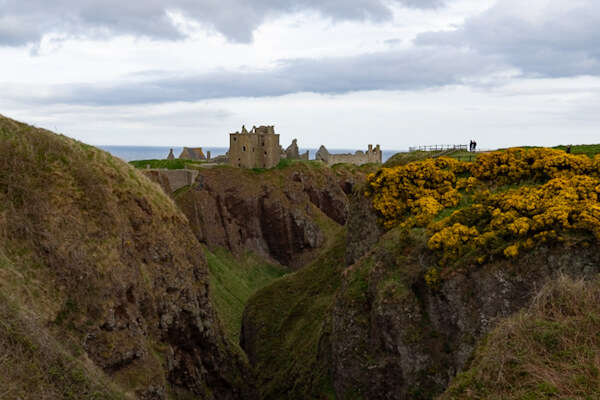
Intro and travel report
We leave the bustling city of Aberdeen and follow the coastal road south. High cliffs and tiny bays, known as coves, dominate the landscape. On the landward side, it is green and slightly hilly.
In between, we see small harbour towns and houses on the coast. The view stretches far out over the North Sea.
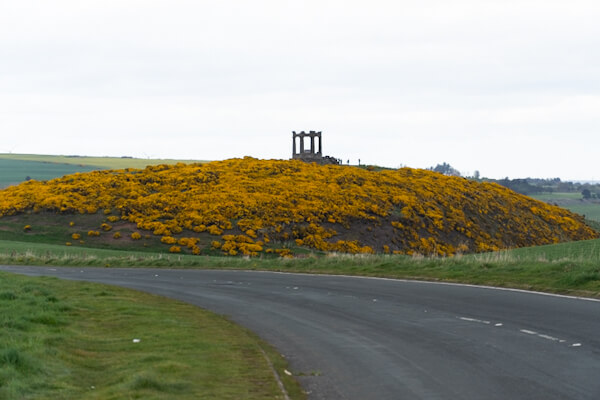
South of Stobehaven is the turn-off to Dunnottar Castle. It’s almost inconspicuous, because there’s not much here apart from the castle. A few houses, lots of sheep, that’s about it.
There is a visitor car park, but the bus parking spaces are already full and our motorhome wouldn’t fit in the car spaces anyway – and they’re already full too.
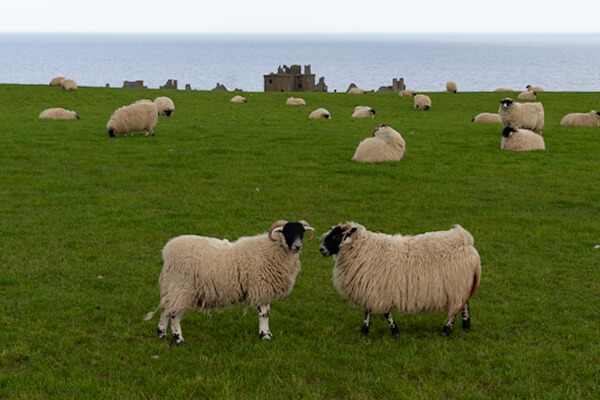
Dunnottar Castle is one of the better-known attractions on Scotland’s east coast, but parking is limited and the grounds are extensive, so it can’t get too crowded.
We find a parking spot on the side of the road with a direct view of a war memorial on a hill. I walk past a huge pasture with countless sheep to the entrance. Behind the sheep, the castle rises up against the vast sea.
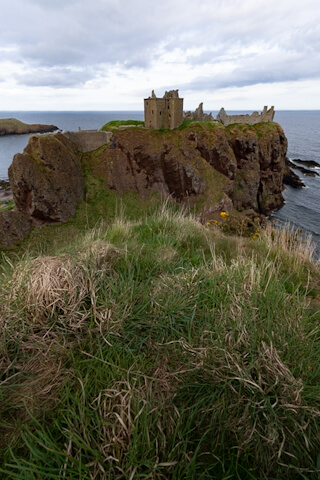
A beautiful old stone house, a small entrance and an information board follow. It’s a few minutes’ walk to the viewpoints at the castle – no problem, as the path is easy to walk on at first.
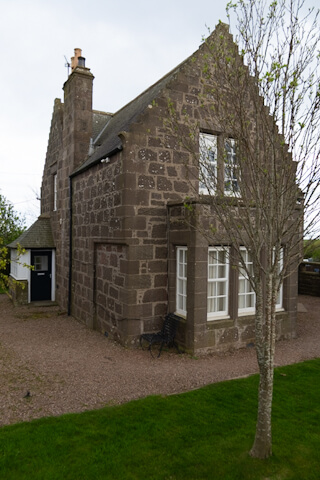
At first? Yes, because shortly before the castle, the path descends quite steeply and then climbs back up to the rock on which the castle stands. But it’s only a short distance and therefore very easy. Further to the right, there is another beautiful viewpoint, which can be reached via a small path (down and up).
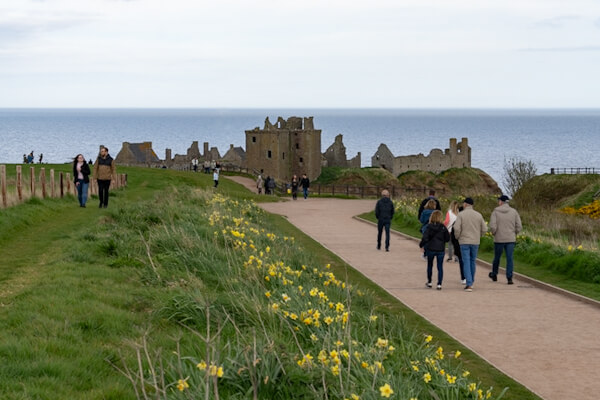
The view of the castle is breathtaking, as the location is absolutely spectacular! Seabirds nest on the almost vertical cliffs, and above them rise the dark walls of the castle, looking almost menacing.
The small winding path down the hill and up the rock is actually the only official access route to the castle’s entrance gate.
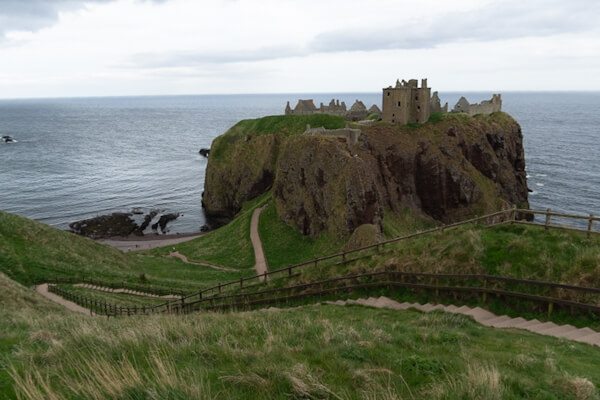
Thanks to this unique location, the castle was extremely well protected and easy to defend, both on the land side and on the sea side.
Basically, only the rock had to be defended. The buildings and walls on the rock or cliff plateau could therefore get by with lower walls. And so, in addition to a tall square tower, the keep, and several smaller round towers, there are mainly residential buildings in the castle.
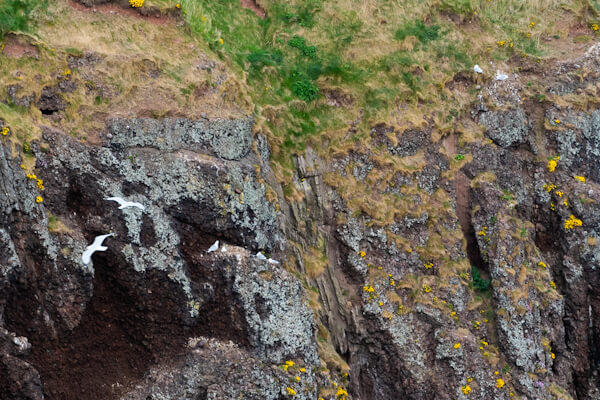
Oh yes, perhaps I should mention that the castle is now a ruin. However, it is still impressive and can be visited. Several buildings are also still at least partially preserved.
I wander around a bit more on both sides of the castle and admire the cliff landscapes of the coast, the tiny bays and the many seabirds. After taking several photos, I say goodbye to this impressive building in its incredible location and walk back to the motorhome, with which we continue our journey. What a location!!!

Brief background information on Dunnottar Castle
A Pictish fort is believed to have stood on the castle rock long before that. A chapel was founded here in the 5th century, and the predecessor to the present-day castle was built in the 12th–13th centuries.
The castle was expanded and rebuilt several times, and the current buildings date mainly from later periods: the tall residential tower is from the 14th century and the remains of the palace are from the 16th century.
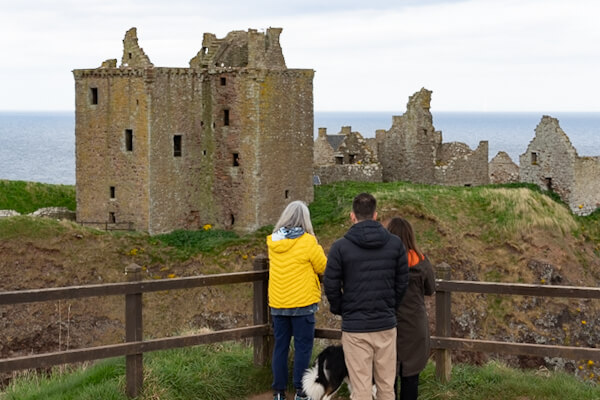
Castles that are so spectacularly built inevitably have an eventful history.
In the year 900, the then Scottish King Donald II defended the castle against invading Vikings. He was defeated, died, and the castle, probably still a wooden fort, was destroyed.

In the 12th century, Dunnottar Castle was the centre of the region under Norman-English rule.
In the 13th century, William Wallace recaptured the castle and it fell back under Scottish rule.
In the 14th century, the half-ruined castle was rebuilt by the English, only to be recaptured and destroyed by the Scots shortly afterwards.
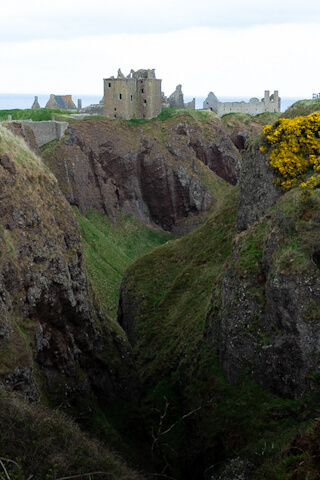
After that, things quietened down and the castle was rebuilt by the Keith clan and used as a clan seat until the 18th century. In the 16th century, the castle was expanded into a comfortable palace.
The turmoil of history continued, and for a time even the Scottish crown jewels, normally kept in Edinburgh, were stored in the castle.
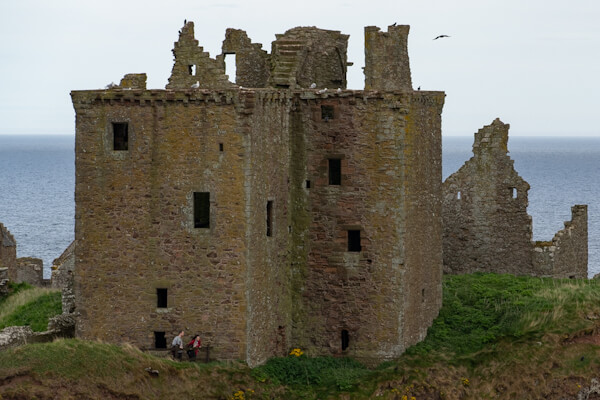
Conclusion
If you are travelling along the east coast of Scotland, I can highly recommend a short visit to Dunnottar Castle.
Even if you don’t want to visit the castle and are perhaps not interested in its history, the short walk to the castle is beautiful and the location on the cliffs is absolutely impressive.
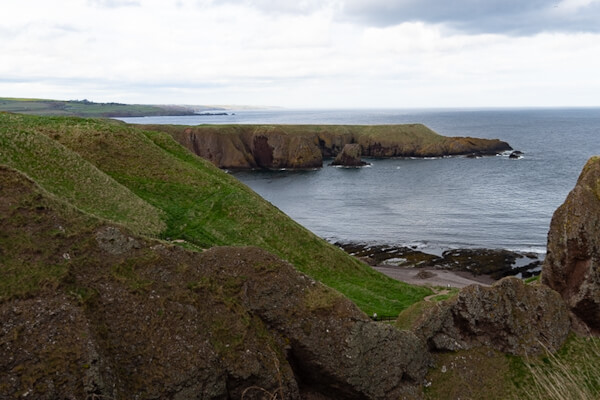
A beautiful spot of Scottish nature with a lovely historical cherry on top. That’s how I like it.
By the way, we really enjoyed our trip along the east coast of Scotland. The rolling green countryside combined with the stunning coastline is simply beautiful!
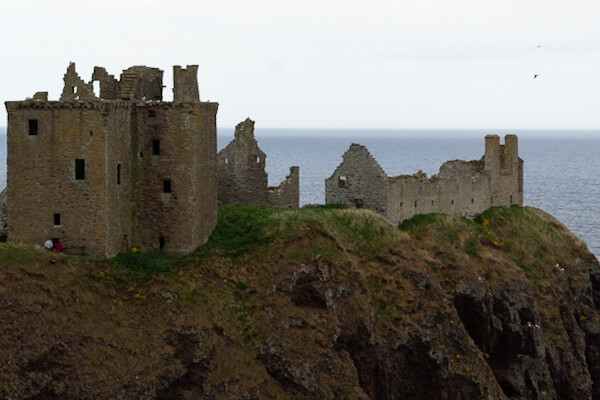
More interesting articles for you
NORTH OF INVERNESS…
MAGICAL GLENCOE VALLEY
ULLAPOOL AND THE WILD NORTH COAST 500
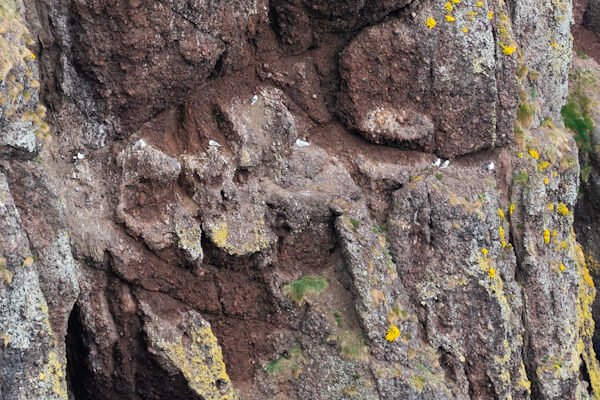
Image credit: Dunnottar Castle (photo: Ulrich Knüppel-Gertberg)